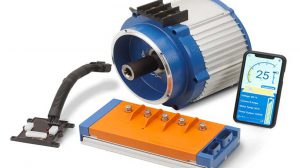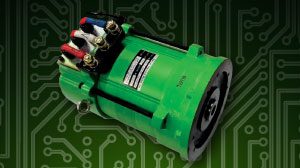By: Matt Vallez
The following technically speaking first appeared in the March/April of 2005 Golf Car News Magazine. It has been updated and fact checked again for release in this issue.
The lead acid battery has been the battery of choice in the golf car industry for years. Until other battery technologies become economical enough to put under the seat of a golf car, at a reasonable price, lead acid battery packs will be in golf cars for the foreseeable future. In today’s tight economy, it is necessary to get every last drop of amperage out of a lead acid battery pack, there are products, old and new, that help to utilize every bit of life available in lead acid batteries. Today you will read about some of them. First let us discuss what is the number one, life shorting event and killer of lead acid batteries, sulfation.
Sulfation is the most common cause of lead acid battery failure and here is why. As a battery cycles, crystalline lead sulfate begins to coat the surface of the electrode plates. Crystalline lead sulfate does not conduct electricity and cannot be converted back to its previous state under normal charging conditions. Over time this crystalline coating will start to limit the area on the plates where an electrochemical reaction can take place. As this materializes on all the surfaces of plates within a battery, the battery begins to lose its ability to hold a charge.
As the electrical resistance within a sulfated battery increases, receiving a charge begins to take longer, and less efficient charging produces excess heat. Higher battery temperatures cause longer cooling times and accelerate corrosion. Over time and repetition the process spirals to the point where mechanical failure can take place as a side effect of the excess sulfation. Barring any mechanical failure of the battery, sulfation will be the ultimate mode of failure for 80% of all lead acid batteries. This is a time proven fact; sulfation shortens the life of most lead acid batteries.
Sulfation is a natural process that occurs in all lead acid batteries, and can be stopped by one of two different ways. The first and oldest method of desulfation, the process which sulfation is stopped and/or reversed, is the pulse method. This method has been around for quite some time. Our government has used pulse desulfation devices on military equipment since WWII. There are numerous competing manufactures of these devices. The claims are that, pulse technology battery desulfation is clean, efficient and will prolong the life of your batteries at least 20%. That’s 20% if used from day one on a new battery; you can double the life of an older battery or battery pack, by simply stopping and, or reversing sulfation.
Pulse desulfation in general is a small electrical device that is attached to the battery or batteries, which delivers a small electrical charge through- out the batteries plates. This charge causes the sulfate crystals to either dissolve or fall off the plates, depending whose literature you believe, and what product you get. These pulse devices have been the most widely used and have the longest track record of any method of desulfation around. They are most commonly used in the material handling industry, where battery replacement is both expensive and time consuming.
They pose two problems; one is the problem of attaching an electrical device to an electrical device. Murphy’s law may come into play and at some point, an electrical event will take place within the device or the battery that will do damage to the pulse device. The other problem for the golf car industry is the price. Some of these devices cost as much wholesale, as two-golf car batteries. That is a lot to pay to increase battery life by 20% or more, and not practical for the golf car industry. In the forklift industry a battery can be as much as $ 5,000, so a $300 pulse desulfater makes a lot more sense. Golf car battery sets, on the other hand can be as low as $366 for 6-volt and not more than $500 for 8-volt, wholesale pricing. A Pulse desulfater will have to come down in price to be a viable product for the golf car industry.
The other method that I have had success with over the past few years is a chemical method, an additive to the batteries electrolyte that actually reverses sulfation. This method of desulfation works faster than the pulse method. A set of mechanically sound batteries that can no longer hold a charge can be ready for action in about a half hour. Just by dissolving the sulfate crystals off the plates, the chemical reaction actually restores the batteries ability to hold a charge. I would not believe it, except I have seen it with my own eyes. The second advantage to this method is cost. The price to restore a set of batteries with a chemical desulfater is $37.50, one time. That is less than the price of one battery. Well worth the price even if it only extends the life by 20%, and well worth it if it doubles the life as it can for an older set.
Chemical desulfaters have been around for a number of years as well. There are different types of chemical desulfaters. Some use cadmium, an extremely dangerous chemical. Others use non-hazardous chemicals that work as a catalysis, when added to the electrolyte. The way things are these days dangerous chemicals are just to great of a liability around the work place and should be avoided at all costs.
All chemical additives have a certain snake oil reputation to overcome, and a non-hazardous chemical desulfater is no exception. Nivel now carries a non-hazardous battery desulfater and demister. Both are in 12oz bottles desulfater is part #14565 and the battery demister, a wonderful product that lessens battery gassing and watering for any voltage of battery is part #6152. These products have been used extensively in the man lift industry, and have demonstrated its value there. I was not convinced until I saw them work myself, and have since had Roger Kramer, A.K.A The Guru, test these products as well. He also is convinced of the value these have for our industry. I would expect you would be as skeptical as I was and need to see for yourself to believe it works. Give it a try on one of your next projects and I’ll bet that you make it part of your arsenal.










